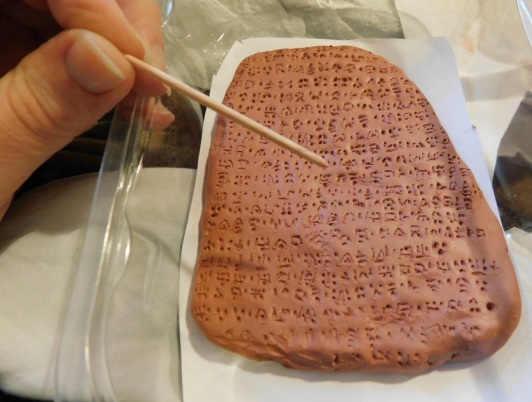Guest post by CREWS Visiting Fellow Cassandra Donnelly
During the last week of April the Program for Aegean Scripts and Prehistory (PASP) hosted its first ever “Late Bronze Age Clay Time! Study Break” in the Classics Lounge in Waggener Hall at the University of Texas at Austin. Approximately twenty undergraduate and graduate students, along with some staff and their children, produced a veritable archive of Late Bronze Age (LBA) tablets.

We provided attendees with the clay (local-fire “Longhorn Red” clay from Armadillo Clay), three types of styluses, and one of three different instruction packets. The first type of instruction packet pertained to Mycenaean Greek and Linear B, the second to Ugaritic, and the third to Cypro-Minoan. Each packet included instructions for how to make one of three tablet types, a signary in the corresponding script, and a model text to write in the corresponding language. Each of the texts, once combined, tells the story of the Late Bronze Age copper trade as mediated by Cypriot traders. Continue reading “Late Bronze Age Clay Time!”

